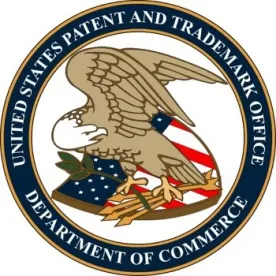In Impax Laboratories Inc. v. Lannett Holdings Inc., the Federal Circuit upheld the district court decision finding that defendants had failed to establish obviousness of AstraZeneca’s Zomig patents (directed to intranasal zolmitriptan formulations). Although an asserted reference could have been read to suggest an intranasal composition of zolmitriptan, both the district court and the Federal Circuit agreed that the pharmacological activity of zolmitriptan’s first-pass metabolite made it non-obvious to formulate the drug for intranasal administration.
The Zomig Patents At Issue
The Zomig® patents at issue were U.S. 6,750,237 and U.S. Patent 7,220,767, owned by AstraZeneca and exclusively licensed to Impax.
Claim 1 of the ‘237 patent recites:
1. A pharmaceutical formulation suitable for intranasal administration which comprises zolmitriptan and a pharmaceutically acceptable carrier wherein the pH of the formulation is in the range 4.5 to 5.5.
Claim 1 of the ‘767 patent recites:
1. A pharmaceutical formulation suitable for intranasal administration which comprises zolmitriptan and a pharmaceutically acceptable carrier wherein the pH of the formulation is less than 6.0.
The District Court Decision
The district court gave patentable weight to the “suitable for intranasal administration” language, and found that defendants did not show that it would have been obvious to formulate zolmitriptan for intranasal administration. As explained in the Federal Circuit decision, that finding was based on evidence that zolmitriptan was “known to be active … through its more potent metabolite,” which is formed after oral administration. Thus, “a skilled artisan would not have been motivated to make with a reasonable expectation of success nasal formulations of zolmitriptan.”
The Federal Circuit Decision
The Federal Circuit decision was authored by Judge Lourie and joined by Judges Dyk and Taranto.
Defendants argued on appeal that “the prior art expressly discloses nasal formulations of zolmitriptan” and that the district court failed “to consider the prior art ‘as a whole.'” The Federal Circuit summarized the reference at issue as follows:
Chauveau is generally directed to formulating an active ingredient using capryl caproyl macrogol glycerides (a version of which is marketed under the name Labrasol®) for oromucosal administration of the active ingredient. …. Chauveau discusses that its teachings can be applied to formulations for buccal, nasal, or pharyngeal administration, among which the nasal route is preferred. …. Chauveau’s teachings seek to provide pharmaceutically effective formulations for active ingredients that would be degraded by oral administration, particularly in the gastrointestinal tract.
According to the Federal Circuit:
The [district] court found that Chauveau “offers a laundry list of potential active ingredients,” including “over twenty-five categories or examples of medications.” …. At the end of the list, Chauveau states that “[t]he active substance can also be, in particular, an antimigraine active substance, such as a triptan, such as sumatriptan or zolmitriptan.” …. The example formulations described in Chauveau include IS 159 (tryptamine-5-O-carboxymethyl-tyrosyl-glycinamide) as the active ingredient, but not zolmitriptan.
Rejecting defendants’ argument, the Federal Circuit explained:
Lannett is correct that in an obviousness analysis, prior art should be viewed as a whole. However, Chauveau, as a whole, is not about intranasal formulations of zolmitriptan, which is barely mentioned. It is about formulations of a wide variety of compounds with capryl caproyl macrogol glycerides. Zolmitriptan is mentioned once, with no further mention in an example or claim.
The Federal Circuit also credited the district court’s “additional findings beyond the fact that zolmitriptan was barely mentioned in Chauveau,” relating to the higher potency of the active metabolite that is formed by first-pass metabolism after oral administration. That is, because the efficacy of zolmitriptan was associated with a metabolite formed after oral administration, it would have been “counter-intuitive” to formulate zolmitriptan for intranasal administration, and such an undertaking would not have been associated with a reasonable expectation of success.
The Prior Art As A Whole
USPTO Examiners often cite the principle that a prior art reference is to be viewed “as a whole” when relying on a specific portion of the reference, similar to defendants’ arguments here. The Federal Circuit turned that practice on its head, citing the “as a whole” rubric to describe the focus of the Chauveau reference. Both the district court and Federal Circuit were willing to look beyond the words of the reference and considered how the unique properties of zolmitriptan would have impacted the understanding of a person of ordinary skill in the art.




 />i
/>i

